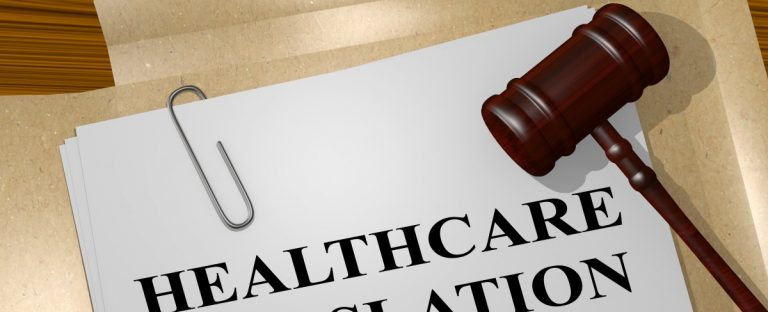As you know, there are countless healthcare KPIs (key performance indicators) to review, to monitor over time, and to create goals for improving. We know that the process of pulling reports on so many different KPIs can be overwhelming and confusing, which ultimately makes the process ineffective.
That’s why we love to write various articles that emphasize and explain different metrics to track, their role in your overall operations, and best practices for analyzing them. Today we’re highlighting a financial metric that is often overlooked but which has a tremendous impact on your healthcare revenue cycle: payer reimbursements.
Keep reading to learn more about payer reimbursements, how they play a role in your holistic practice’s revenue cycle, and our top tips for evaluating them.
What Are Payer Reimbursements?
After delivering quality care to patients, the medical coding and billing process begins so that the patient, insurance company, or government program can pay for the services rendered: these are known as payer reimbursements.
Depending on how your holistic practice operates, you might bypass insurance companies or government payer programs like Medicare and opt for the patient to be solely responsible for paying for your services. On the other hand, you might accept insurance or Medicare so that you have a wider pool of patients to attract, in addition to the patient-payer model.
Either way, someone or some entity is paying for the work that you deliver to your patients, and this is why payer reimbursements is a key financial metric to be aware of and track for your holistic practice.
How Do Payer Reimbursements Affect Your Healthcare Revenue Cycle?
Here’s a well-kept secret: your holistic practice needs money to operate, sustain itself, and grow over time. Payer reimbursements affect your healthcare revenue cycle because without consistent, accurate, and timely payments, your practice can’t function.
Therefore, tracking this KPI helps you determine a baseline for your practice’s financial standing and empowers you to know where any discrepancies might be falling through the cracks. Tracking this metric means you’ll have a clear understanding of where, when, and how your holistic practice is getting paid or if there are any areas that need attention.
Top Tips for Analyzing Your Holistic Practice’s Payer Reimbursements
Check out our top tips for analyzing your holistic practice’s payer reimbursements:
Learn Your Payer Reimbursements Through and Through
As the saying goes, knowledge is power. That’s why our first tip for analyzing your practice’s payer reimbursements is to leave no stone unturned and to delve into each case. After all, you don’t know what you don’t know—so do your due diligence to investigate the current standings of your payer reimbursements!
Catching problematic patterns or infrequent inconsistencies in your payments enables you to address them before they continue to cause an unstable financial performance for your practice. Whether it’s a problem caused by inaccurate coding or a payer’s unintentional miscoordination or some other factor, your analysis gives you the power to resolve it.
Plus, with a close eye on your insurance contracts, Medicare billing processes, and patient-payers, you can spot each inaccurate payment as soon as it happens so that it doesn’t spiral into a bigger problem.
Build habits based on best practices, such as:
- Scrub insurance and Medicare claims prior to submission to ensure they’re coded properly
- Keep the lines of communication open with your payer contacts to make sure accurate rates are paid
- In the instance of any underpayment—be it your fault, or the payer’s—follow up and get every dollar you’re owed
Unless you’re applying resources to address reimbursement accuracy, you put your profitability at risk.
Evaluate Your Payer Reimbursements with These Questions
When reviewing this financial metric, ask yourself a few questions to gain a deeper understanding of what’s going on:
- Compared to your payer contracts, whether that’s with your individual patients or with an insurance company or Medicare, are the reimbursements accurate?
- Which payers are deviating from set rates?
- Are the under or overpayments happening consistently, or sporadically?
Review your data for the last six months; this is a substantial time period to examine without overwhelming yourself with trends of previous years. Ideally you won’t find any of these issues, but if you do, then you’re able to pinpoint which issues are stemming from where.
Be Conscious of Issues at the Start of the Year
Payer reimbursement issues can happen at any time but can be especially more likely when the new year rolls around in January. Inaccurate reimbursements can be the result of a misaligned fee schedule when payers have yet to update their systems with new codes and updated relative value units (RVUs).
Optimize Your Revenue Cycle with Holistic Billing Services!
Your holistic practice can’t effectively function on an ineffective revenue cycle, which is why examining your payer reimbursements metric is essential for financial success.
However, if you find yourself overwhelmed with the medical billing process, frequent issues with accurate coding, and general confusion regarding billing insurance companies or Medicare, then you’ll have an even bigger struggle for financial clarity.
Partner with the friendly experts at Holistic Billing Services to handle the complicated responsibility of your medical coding and billing processes! We’ve got billing specialists for your specialty and your success is our success.
Healthcare legislation can be tricky to navigate, especially when you’ve got a million other things on your plate. However, it’s still essential to keep up with because it can impact your holistic practice, healthcare revenue cycle, and patients.
One recent example is the No Surprises Act, which affects you, your patients, and your revenue cycle. This piece of healthcare legislation essentially aims to refine the medical billing process at the federal level—and we’ll dive into the details in this article here.
Keep reading to learn more about the No Surprises Act and its effects on your holistic practice!
What Is the No Surprises Act?
To sum up the No Surprises Act in one sentence? It’s intended to comprehensively mitigate surprise medical bills, which often occur when insured patients inadvertently receive care from out-of-network providers.
At the end of 2020, this piece of healthcare legislation was signed into law to provide federal-level protections for consumers against surprise medical bills. According to the handy Key Takeaways listed for the No Surprises Act, this legislation:
- Protects patients from receiving surprise medical bills resulting from gaps in coverage for emergency services and certain services provided by out-of-network clinicians at in-network facilities, including by air ambulances.
- Holds patients liable only for their in-network cost-sharing amount, while giving providers and insurers an opportunity to negotiate reimbursement.
- Allows providers and insurers to access an independent dispute resolution process in the event disputes arise around reimbursement; the legislation does not set a benchmark reimbursement amount.
- Requires both providers and health plans to assist patients in accessing health care cost information.
This Act was part of the Consolidated Appropriations Act of 2021, which handled a variety of public health and private insurance issues, and a majority of the initiatives outlined in this legislation took effect on January 1, 2022. The Departments of Health and Human Services (HHS), Treasury, and Labor are responsible for issuing regulations and guidance to implement many of the regulations.
How Does The No Surprises Act Impact Your Holistic Practice?
While sections of this new legislation won’t apply to your holistic practice—such as sections 105 and 106 that deal with air ambulance services and charges—there are still some important parts that might impact your practice, especially if you’re contracted with private health insurance companies.
The primary effect that this healthcare legislation has on the medical billing process is that out-of-network providers can’t bill patients for excessive charges, nor can the patient be held responsible for such charges.
How Does This Healthcare Legislation Impact Your Patients?
Ultimately, the No Surprises Act leads to enhanced transparency and patient engagement in the financial workings of your holistic practice. By increasing patient understanding of the medical billing process and what they are responsible for in the healthcare revenue cycle, patients can make informed decisions regarding their care.
Patient education and patient engagement are vital for your holistic practice, regardless of accepting insurance. Initiating the conversation with your patients about their responsibility for paying for services rendered is helpful because it encourages their questions and concerns. Utilizing these lines of communication can build rapport and trust between your patients and your holistic practice.

3 Medical Billing Tips for Your Holistic Practice
Whether your holistic practice is significantly or minimally, your healthcare revenue cycle and medical billing process can always benefit from a few tips:
Keep Patient Information Updated
From contact information to insurance carriers and more, there’s a lot of patient information that can change over time. Inaccurate patient information can lead to denied claims, which can throw a wrench in your holistic practice’s revenue cycle. Be sure to verify your patient’s data hasn’t changed or update their profile with new information on a regular basis to ensure nothing slips through the cracks.
Use Appropriate Codes and Modifiers
Medical coding accuracy plays a critical role in your practice’s revenue cycle; inaccurate or incomplete claims that use the wrong codes or modifiers can result in rejected claims that need to be reworked. Any additional time spent reworking claims means it’s costing your practice time and money instead of bringing in your reimbursement! Keep a list of frequently-used codes and modifiers so that you won’t have to look too hard for them when you’re filing claims.
Streamline Your Medical Billing Process by Partnering with a Medical Billing Firm!
Medical billing firms make it their job to stay updated on new healthcare legislation initiatives and ensure your revenue cycle is as optimized as possible. If your holistic practice is swamped with piles of claims that need to be filed or reworked, then it’s time to consider partnering with a medical billing firm to handle it.
With a medical billing partner, you’ll enjoy an immediate boost to your revenue cycle, more time to focus on patients, develop strategic moves for your practice, and gain insight into your financial performance.
Partner with Holistic Billing Services Today!
The experts at Holistic Billing Services are as invested in your success as you are—we work as an extension of your holistic practice! We’ve got experience in your specialty and can help you navigate the complexities of the medical coding and billing process so that you can focus on what matters most: delivering great care to your patients.
We offer a variety of acupuncture billing services, massage therapy billing services, and chiropractic billing services, including:
- Online insurance verifications
- EHR and SOAP documentation
- Insurance claims processing
- Insurance credentialing
In the enduring fight to reduce the severity of opioid addiction, traditional and holistic approaches continue to overlap and present alternative methods for treating chronic ailments and improving mental health. One significant treatment that is a proven opioid alternative is acupuncture.
Acupuncture has its origins in traditional Chinese medicine and recent studies over the last few decades prove time and again its effectiveness in treating a variety of chronic pain conditions and more. In particular, acupuncture research has investigated its benefits for veterans—and the federal department of Veterans Affairs recently included acupuncture in its efforts to promote complementary and integrative health.
How did the VA come to this conclusion? And what does this relationship mean for your acupuncture practice and the veterans in your community? Keep reading to learn more about the history of acupuncture and the VA, plus some tips for billing the VA for acupuncture services provided to veterans.
Acupuncture & The VA: A Timeline
Let’s look at a brief timeline of acupuncture and the VA:
- 1998: The National Center for Complementary and Alternative Medicine (NCCAM) is established with the goal of rigorously testing the effectiveness of “alternative” medicines that existed outside the scope of traditional medicine
- 2005: The Institute of Medicine (IOM)—now known as the National Academy of Medicine (NAM)—reports on the relationship between “alternative” medicines and Americans partaking in them for their overall wellness; this report encourages educational curriculum regarding “alternative” medicines be included in the medical field so traditional physicians can help their patients navigate these treatments
- 2014: Congress changes NCCAM’s name to the National Center for Complementary and Integrative Health (NCCIH), indicating a change in attitude towards “alternative” medicines as a more serious and important approach to health and wellness
- 2015: A report conducted by the Veterans Health Administration (VHA) Healthcare Analysis and Information Group recognizes acupuncture as one of the most common complementary treatments, further validating acupuncture’s role in treating a variety of ailments
- 2017: VA Directive 1137 – Provision of Complementary and Integrative Health is approved, which establishes national VHA policy regarding the provision of CIH approaches; this includes acupuncture as a vetted and recognized complementary treatment for veterans
Evidence of Acupuncture’s Benefits for Veterans
The VA found that acupuncture provides numerous benefits to common ailments and conditions that veterans must live with, including:
- Lower Back Pain: A 2012 analysis of data on participants in acupuncture studies found that actual acupuncture was more helpful than either no acupuncture or placebo acupuncture
- Mobility: A 2008 study found that there was a significant improvement in mobility for patients with osteoarthritis of the knee when acupuncture treatments were included in their wellness plan
- PTSD: According to research published by the National Center for Biotechnology Information (NCBI), acupuncture can affect the autonomic nervous system, and the prefrontal as well as limbic brain structures, making it able to relieve the symptoms of PTSD

5 Steps for Billing VA for Acupuncture Treatments
The medical billing process for the Veterans Affairs department requires a few steps to accurately bill them and develop a relationship with them along the way; start with these foundational steps:
Acquire Your National Provider Identifier (NPI)
The first step to billing the VA for acupuncture is to acquire a National Provider Identifier (NPI). A National Provider Identifier, or NPI, is a 10-digit identification number issued to healthcare providers in the U.S. by the Centers for Medicare and Medicaid Services. Your acupuncture practice will need to apply for an NPI if you are a HIPAA-covered health care provider or if you bill insurance for your services.
Establish Your Community Care Network Region
The VA Community Care Network (CCN) is divided into six regions that cover the continental United States in addition to Hawaii, the Caribbean, and the Pacific Islands. TriWest manages the western networks while Optum handles the eastern regions. Find out which region your acupuncture practice resides in.
Get Credentialed in Your CCN Region
In order to provide great care for veterans at your holistic practice with acupuncture services, you’ll need to be credentialed with the region’s third-party administrator. This process typically takes at least three months to complete. Depending on your region, contact the following to get started with the credentialing process:
- Region 1: 888-901-7407 (Optum)
- Region 2: 844-839-6108 (Optum)
- Region 3: 888-901-6613 (Optum)
- Region 4: 866-286-4174 (Triwest)
- Region 5: 877-226-8749 (Triwest)
The VA has not officially contracted with an agency for Region 6; contact information is pending for that region.
Fill Out Registration Paperwork
Upon completing the credentialing process with your region’s third-party administrator, you’ll need to submit the necessary paperwork to become fully registered with the VA’s Community Care Network. This paperwork is submitted electronically and will include details regarding any final requirements that must be met in order to finish the credentialing process for your acupuncture practice.
Begin to Receive Patient Authorizations
Once your holistic practice has been verified and authorized by the VA’s network, you’ll start to receive referrals to treat veterans who are approved to start acupuncture treatments. Your CCN administrator will provide the patient’s authorization letters before the patient’s first visit to your acupuncture practice.
After completing these important foundational steps, you’re ready to start billing the VA and treating veterans in your community!
When submitting an insurance claim to the VA for the first time, you’ll need to submit all the authorization letter pages together with the claim. Make sure you transmit all the following information with your acupuncture services claim to avoid a denial:
- A cover letter
- The date range for services
- Authorization numbers
- The total number of visits authorized
- The patient’s demographics including address, date of birth, and social security number
- Documentation and CPT codes of treatments administered
By following this checklist, you can ensure your Veterans Administration insurance claim will have all the accurate information it needs for a smooth billing process.
Want to streamline your acupuncture practice’s overall revenue cycle? Partner with Holistic Billing Services to optimize your medical billing and coding processes, minimize your rejected claims, and instantly improve your revenue cycle. Our experts have experience in your specialty and we’re eager to help your holistic practice.
Your holistic practice’s health insurance denial rates are some of the most significant indicators of your medical billing success. Unfortunately, they’re also one of the most difficult elements of your billing operation to improve. If you’re not paying close attention to your insurance claim denials rate, you’re jeopardizing the financial stability of your practice. By following these best practices guidelines, you can avoid insurance claim denials and achieve your holistic practice’s overall revenue potential.
What Are Insurance Claim Denials?
The medical billing process is integral for practices to receive reimbursements from health insurance companies. When patients utilize insurance to pay for treatments, healthcare providers have to submit claims so they can be paid for their specific services from the insurance companies. While medical billing ensures that holistic practices receive their due payments for treatments, it’s also a complex process. 
If claims are missing information or filled out inaccurately, then they can be denied by the insurance companies and stymie the reimbursement process. Insurance claim denials are frustrating to any holistic practice; not only is the payment completely denied or delayed, but the time it takes for reimbursements can extend to weeks or longer. For the most timely and full reimbursements, holistic practices must keep denials in medical billing as minimal as possible.
Common Reasons for Claim Denials
The five most common procedures denied for holistic practices are:
- Manual therapy
- Heat/cold therapy
- Office/outpatient established visits
- Injections
- Acupuncture services.
For strong revenue cycle management, holistic practices should aim for a 95% clean claims rate; maintaining a high clean claims rate increases your practice’s efficiency and overall profitability. So, how can your practice avoid insurance claim denials and maintain a strong clean claims rate? Here are some of the top reasons for denials in medical billing:
Lack of Coding Specificity
Especially in the ICD-10-only landscape, claims that aren’t coded to the fullest level of specificity possible are ripe for denial by both public and private payers. That means that all identifiers and modifiers must be included on every claim, every time, covering concerns as granular as possible.
Billing Duplicate Claims
Even in well-organized operations, it’s surprisingly easy for practices to submit claims relating to the same encounter more than once. It may happen when a team member resubmits a claim before hearing back from the insurance company on the initial submission or fails to check on existing documentation as to whether the claim was submitted from the start. Either way, it’s an easy ticket to an unnecessary denial.
Timely Filing
Organizations often see unnecessary denials for failing to submit claims within the payer’s filing window. Why do practices wait? While reasons vary, the issue usually comes down to bandwidth and time: If your staff is stretched too thin, it’s impossible to address all of your front-office and back-office responsibilities in a timely manner. Contracting with a medical billing company is a smart way to keep filing deadlines from slipping past you.
Unverified Insurance
Insurance claim denials can be the byproduct of established patients updating their insurance without letting your practice know. Staff members may assume that regular patients have not had any changes to their insurance. However, if there have been changes to their insurance and no one checks their eligibility, then you might be headed straight for denials. Verifying your patient’s insurance at every visit can ensure there are no insurance-related issues during the billing process.
Best Practices for Avoiding Insurance Claim Denials
After learning the common reasons for insurance claim denial, try the following denial management tactics!
Track Every Claim
No claims should ever get “lost” in your practice management system. If that’s happening to you, it’s imperative to implement a more comprehensive process for tracking where claims stand throughout the entire revenue cycle. In many cases, claims slip through the cracks because they’re not handled fast enough by the team at your practice. Make sure your coders are coding every encounter on the same day as the date of service, then upgrade your technology to a system that scrubs, submits, and monitors claims with minimal employee effort.

Identify the “Why” In Your Insurance Claim Denials
Simply put, you can’t lower your denial rate if you lack an understanding of why your claims are being denied! Review all of your denial notices from a set period – for example, three or six months – and log the associated reasons for the denial. Look for patterns, then talk it out with pertinent staff members to get back on track.
Follow Up In Time
Most denials can be corrected and resubmitted within a given time frame, which varies from payer to payer. Find out what the window is for each of your major players, and make sure it never slips past you. Better yet, create a window of your own, like five to ten days, during which it is your billing team’s top priority to follow up on every denial and correct or appeal when appropriate.
Automate Eligibility Checking
Unfortunately, many holistic practices handle eligibility checks in an unstructured, unsophisticated way – heavy on last-minute calls to payers in advance of a patient appointment, or sometimes even after services have been rendered. Neglecting eligibility checks – or managing them in an outdated way – is a disservice to your patients and practice!
Reduce Your Claim Denial Rate with Holistic Billing Services!
By using these tips to reduce your holistic practice’s claim denial rate, you’re sure to make the most of your practice’s revenue in the future. However, these tips definitely require time and effort to do it successfully. If you’re in need of expert medical billing services, let Holistic Billing Services be your go-to source for an error-free billing solution.
With decades of experience dealing with a broad range of medical billing issues for all kinds of holistic practices, the team at HBS has seen just about every kind of medical billing error an organization can make. That’s why our clients trust us to help them manage their insurance claims to ensure they’ll be accepted as clean claims on the first attempt, avoiding lengthy back and forth negotiations with the insurance company. And best of all, you’ll avoid the scrutiny of federal and state auditors.
Contact us today to learn about Holistic Billing Services medical insurance billing services and find out how we can help you increase your clean claims rate!
Unfortunately, many holistic practices simply let their accounts receivable (A/R) metric to be a black box of misunderstanding, when in reality, it’s one of the most important numbers to know when gaining an overview of your practice’s financial standing.
This figure indicates the financial health of your practice, which is essential to know when making budgeting decisions and planning for the future. Keep reading to learn more about this important figure and how to track it!
What Are Accounts Receivable Metrics?
Accounts receivable is the money owed to your practice for services rendered and billed, which is a high-touch area of every holistic practice. So if you aren’t sure what your practice’s A/R figure is, it can be hard to gain a holistic understanding of how long it’s taking you to get paid.
Essentially, your holistic practice’s accounts receivable metric rises when you provide your holistic services on credit terms. The continuous tracking of your accounts receivable facilitates the timely payment of your debts.
Your holistic practice risks accumulating bad debts if you fail to monitor your accounts receivable. As such, the decision to offer your health care services on credit terms comes with the additional responsibility of managing accounts receivable.
Why Should Your Holistic Practice Track Accounts Receivable Turnover?
If patient visits are stable, incoming cash should be too – which is why it’s vital for holistic practices to understand how many days pass between the bills going out and the payments coming in.
understand how many days pass between the bills going out and the payments coming in.
A practice’s accounts receivable (A/R) indicates how many payments have not yet been collected, whether for insurance reimbursements or out-of-pocket services. In a healthy holistic practice, the goal is to streamline your operations to get your practice paid faster, which could involve eliminating billing and coding errors or doing a better job of following up on claims. Tracking the amount of time claims spend in A/R can help practices identify which payers are behind and build rapport to understand why.
With knowledge of the average time that passes between patient visit and payment collection, you can easily spot whether your team is slow to submit claims to payers. Plus, you’ll understand just how much funding you need to keep in the bank – and for how long – in order to sustain your operating expenses prior to reimbursements.
How to Calculate Accounts Receivable
To get a sense of your starting point, calculate your current “Days A/R” by looking back at your billings:
- Compute the average daily charges for a set number of months by adding up the charges posted for that period, and dividing by the total number of days in those months.
- Divide the total accounts receivable by the average daily charges.
The result is the average days in accounts receivable. For example, if you look back at the last three months, you can consider that a starting point for ongoing measurement on a quarterly basis. If you compare those three months to the three or six months that precede them, you can understand if that baseline is consistent with your performance over time.
A/R within 30 days is the golden standard. If you’re averaging over 60 days in accounts receivable, investigate immediately. Is there a payer stalling on payments? Are denials spiking around particular procedures? Have there been errors in your claims requiring resubmissions?
If you’re in the zone of ~45 days – or ideally, less – you can start monitoring and understanding your billings better by bucketing and aging your receivables.
As you know, every payer operates on their own schedule. You can correlate payments coming out with bills coming in to gain an understanding of when an insurer reimburses you. This could be within a 30- or 60-day window – providing your team with more knowledge on when a given bill has reached its “late payment” threshold and it’s time to contact the payer.
Best Practices for Lowering Days in Accounts Receivable
Conduct Timely Invoicing
Prepare and dispatch your invoices immediately after rendering holistic services on credit. Each invoice should have the client’s name, account number, date of transaction, description of the holistic services rendered, any discounts offered, and total payable amount.
have the client’s name, account number, date of transaction, description of the holistic services rendered, any discounts offered, and total payable amount.
These details are crucial in tracking your accounts receivable after transferring them to your sales journals and general ledger accounts. Invoices are also useful in case of errors or disputes, such as overcharges and undercharges, that may arise in the future. Make follow-up calls to confirm your clients received their invoices.
Track Every Claim
No claims should ever get “lost” in your practice management system. If that’s happening to you, it’s imperative to implement a more comprehensive process for tracking where claims stand throughout the entire revenue cycle.
In many cases, claims slip through the cracks because they’re not handled fast enough by the team at your practice. Make sure your coders are coding every encounter on the same day as the date-of-service, then upgrade your technology to a system that scrubs, submits, and monitors claims with minimal employee effort.
Educate Patients
Most patients have only a vague understanding of how holistic practices collect payments from insurance providers and may not have a clear sense of their financial obligations when they consume holistic services.
Providing a brochure or reference sheet to all patients that outlines their role and responsibilities in the payment process can clear up a lot of confusion. It’s also important to have someone on staff who has the financial expertise to answer any questions patients may have about how the claims and payment process works.
Outsource Your Medical Billing
Whatever the cause is behind your accounts receivable metrics, partnering with a reputable medical billing service is one of the fastest and easiest ways to turn this key revenue metric around. Experienced medical billing services can overhaul the way a practice codes its services and how it submits claims to payers to minimize the rate of denials.
Outsourcing your medical billing process to a third party also frees up time for office staff to focus on providing the best service and care possible. Instead of spending hours on the phones trying to collect outstanding payments, a specialty practice can focus on expanding its patient base and improving its healthcare experience to better retain the patients it already has.
The experts at Holistic Billing Services believe that our success is your success. From handling medical billing and coding to offering consulting services and much more, our team is dedicated to making it feel like we’re in-house.
With a focus on holistic practices, insurance background, and proven consultants, our team can effectively ensure the financial success of clients, allowing your medical practice to focus on what it does best: treat patients.
Holistic Billing Services’ expertise is rooted in professional, technical, and global billing for hospital and stand-alone holistic care practices. To learn more about how outsourced medical billing with Holistic Billing Services can empower your practice, contact us today. We’ll work with you to build a customized solution that meets the specific needs of your practice and allows you to get back to treating patients.
Running a successful holistic practice involves managing people, administrative responsibilities, and more. But how can you be sure your practice is on the right track to long-lasting success? Utilizing medical billing KPIs to understand your practice’s current performance and set goals for the future can help you realize the status of your holistic practice.
What Are Key Performance Indicators?
A key performance indicator (KPI) is a measurable value that indicates how well you’re achieving key business objectives. They provide a way to monitor an aspect of the holistic practice on a consistent schedule to determine whether or not you’re on target to achieve your established goals.
While a KPI can track many different things, the most important feature of a good KPI is that it must be measurable. Some aspects of a holistic practice are easier to quantify than others, but for a KPI to be effective, you need to be able to compare performance data over time to identify trends and recognize potential problems.
How to Choose the Right Medical Billing KPIs for your Holistic Practice
When selecting a KPI, you first need to know what’s important to your practice. Revenue is usually an easy choice, but there are a number of specific practice activities you may value above others. The best place to start is by doing a thorough assessment of the present state of the practice. This provides a snapshot of where you’re at in terms of financial status, operational efficiency, and patient management. 
Not every holistic practice values the same areas. A wellness care provider may have a different perspective on tracking how many new patients they treat than a more specialized acupuncture practice. At the same time, monitoring too many KPIs can be overwhelming and counterproductive. By focusing on KPIs directly related to revenue, steps taken to address problems that become apparent will improve other areas of your practice along the way.
Top Key Performance Indicators that Holistic Practices Should Be Tracking
There are numerous medical billing KPIs to track for your holistic practice; these are good, foundational metrics to monitor:
Days in Accounts Receivable (A/R)
A practice’s accounts receivable (A/R) indicates how many payments have not yet been collected, whether for insurance reimbursements or out-of-pocket services. For a healthy practice, the average time a bill spends be in A/R should be about 30-40 days. The goal here is to streamline your operations to get your practice paid faster, which could involve eliminating billing and coding errors or doing a better job of following up on claims. Tracking the amount of time claims spend in A/R can help holistic practices identify which payers are behind and understand why.
Percentage of A/R Over 90 Days
After 90 days, outstanding bills and claims become much more difficult to collect while anything over 120 days is likely never going to be collected. If more than 15% of claims are spending over 90 days in A/R, there are likely some serious inefficiencies in your processes that need to be addressed. Tracking this KPI closely will also allow you to “sound the alarm” for your holistic billing team whenever a claim is in A/R for longer than 65 days to greatly reduce the risk of it never being paid.
Net Collection Ratio
Your holistic practice’s net collection ratio is an indication of how much potential revenue you collect after insurance adjustments have been applied. This number will vary a bit by specialty, but the average healthy practice collects around 95% of potential revenue for services, either by collecting from patients themselves or by submitting successful insurance claims. An outstanding practice with the right systems in place – or support from a medical billing provider – typically has a net collection ratio of 98% or greater. Tracking this KPI helps you to measure the overall health of your billing and collections process. If it ever falls below 90% over a period of time, you’ll know that something is out of alignment and should be addressed immediately.
Non-Contractual Write-Off Percentage
A write-off is any bill that goes uncollected; your holistic practice may classify it as “bad debt.” In many cases, it results from denied insurance claims and could indicate an inability of your office staff to follow up on denials. For specialty practices, there is a higher risk of patients allowing bills to go unpaid as they may not need to seek medical services again. In any case, your total percentage of uncollected payments should not exceed 5%.
New Patient Ratio
This KPI tracks what percentage of your patients are first-time visits to your holistic practice. Measured over time, the ratio can help you determine whether your practice offers a good balance of services. For general wellness practices, new patients make up about 25% of visits, while specialty care practices could see up to 50% new patients each month.
Referral Mix
The referral mix segmentation shows you what type of patients you’re receiving and who is referring them to your holistic practice. It can help provide a better picture of where patients are coming from and whether they are a good fit for your practice. 
Payer Mix
Your holistic practice’s payer mix tracks your overall balance of payers. It indicates how much revenue you’re taking in from each payer source, such as individual insurance providers or self-pay patients. As a general rule, no more than 30% of your revenue should be coming from one payer unless you’re working with an underserved population funded by a single source such as Medicaid/Medicare.
Transform Your Medical Billing with Holistic Billing Services
By creating a monthly summary sheet to track KPIs, you can begin to identify and resolve problem areas in your practice that are holding back growth and revenue. Dashboard tools are also incredibly valuable for monitoring KPIs as they allow you to gather and present data in a variety of ways that make it easier to visualize what’s actually happening in your practice. This allows practice administrators to communicate data to physicians and stakeholders more effectively and set benchmarks to evaluate future performance.
Our experts here at Holistic Billing Services believe that our success is your success. From handling medical billing and coding to offering consulting services and much more, our team is dedicated to making it feel like we’re in-house. With a focus on holistic practices, insurance background, and proven consultants, our team can effectively ensure the financial success of clients, allowing your medical practice to focus on what it does best: treat patients.
Our expertise is rooted in professional, technical, and global billing for hospital and stand-alone holistic care practices. To learn more about how outsourced medical billing with Holistic Billing Services can empower your practice, contact us today. We’ll work with you to build a customized solution that meets the specific needs of your practice and allows you to get back to treating patients.
Did you know the healthcare industry loses more than $150 billion a year to no-shows alone? While there are a variety of reasons patients might miss their appointments, like simple forgetfulness or something unexpected taking precedence, it’s in your holistic practice’s best interest to implement a no-show policy. Without one in place, you’re leaving money on the table and wasting your staff’s precious time.
What is a No-Show Policy?
A no-show is when a patient misses their scheduled appointment without informing your holistic practice; this is different from a cancellation, which accounts for the patient communicating their intentions with your practice.
Thus, a no-show policy is the set of guidelines, rules, and penalties that a practice implements to manage patients who intentionally – or unintentionally – miss their appointments. Such a policy discourages your patients from missing their appointments and therefore reduces the adverse impact of no-shows on your holistic practice.
The Effects of No-Show Appointments on Holistic Medical Practices
Simply put, appointment cancellations and no-shows bring only negative consequences to your holistic practice. A missed appointment means no revenue and leaves your knowledgeable staff idle – all cost and no compensation. Precious resources like time and money are wasted when a patient cancels last-minute or doesn’t stick to their appointment, which significantly impacts your practice’s bottom line.
Strategies that aim to overcompensate for no-shows, like overbooking appointments, mean that your holistic practice can’t efficiently allocate its resources; essentially, such approaches can be fiscally irresponsible and result in the burnout of your staff.
What Are The Benefits of Creating a No-Show Policy?
Streamlines the Appointment Cancellation Process
Implementing a no-show policy helps your staff know what to do when patients don’t show up for their appointments. With an established protocol to refer to and communicate with patients, your employees can limit scheduling disruptions, handle follow-ups and rescheduling efficiently, and even fill empty time slots more quickly so your holistic practice won’t miss out on the income potential for that particular time window. 
Discourages Patient No-Shows
Since a no-show policy informs patients of the fees they will incur if they don’t show up, it discourages them from missing their appointments. Without a no-show policy, patients have no accountability whatsoever that will encourage them to go to your clinic.
Boosts Revenue Cycle Management
Ideally, every appointment you set should bring you money. If your patients don’t show up for their appointments, you don’t get paid. The fewer no-shows your practice has, the fewer disruptions there are to your workflows! This means your holistic practice’s patient and team scheduling staff run smoothly since they won’t have to spend extra time overbooking each day in the event of no-show patients. All of this ultimately means you’ll be more profitable since your operations will be better streamlined to account for forgetful patients.
How to Write a No-Show Fee Policy
-
Enable your patients to cancel in a convenient manner
Allow a timeframe for patients to cancel or move their appointments without getting penalized. Life happens, and it helps your patients to have the ability to cancel or reschedule their appointments on their time. When you add an appointment cancellation window in your no-show policy, you show your practice to be understanding and caring. That’s good for business, of course. You don’t want to be viewed as a holistic practice that nickels and dimes its patients!
-
Establish fees for canceling – or to incentivize keeping the appointment
Fees in a no-show policy will help deter patients from missing their appointments since they’ll know how much it’ll cost them; you can also utilize a type of reward system to incentivize patients who keep their appointments! Consider these points when writing your policy:
- Straight fee: Every time patients miss their appointments, they’re charged a no-show fee
- Reward system: Patients who show up on time and keep their appointments can get rewards, such as gift cards or other incentives, depending on your practice.
- Fee erased upon return: A small fee is added to your patients’ bills when they don’t show up for their appointments; however, if patients reschedule and arrive on time, the fee is removed.
-
Explain how your policies are enforced
Besides charging a fee, implement best practices that prevent patients from rescheduling if they exceed a specific number of missed appointments. For example, if you set a no-show limit of three appointments and your patient fails to show up for the fourth time, restrict their online or over-the-phone booking privileges. Be sure to send patient no-show letters to remind repeat offenders of the importance of keeping their appointments, and follow up on patients if they need to reschedule. Doing so discourages patients from missing their appointments without canceling, can minimize no-shows, and can reduce potential costly disruptions to your holistic practice’s workflows.
-
Remind your patients of their appointments
Part of your policy should be outlining a timeline of when the patient will get reminders about their appointments. Patients can sometimes forget their appointments, hence the no-shows. Prevent a good chunk of no-shows by calling patients a few days before their schedule or sending them quick reminders. In your policy, list when these notifications might happen so they can expect to get them.
-
Communicate your policies
Any new policy is only useful if the pertinent parties are aware of it! Ensure your patients know the consequences of missing appointments by communicating your no-call no-show policy. Below are a few common, yet effective, strategies to inform your patients about your policy. 
- Display your no-show policy on your online booking portal so patients know the guidelines and associated fees if they miss their appointments without giving you notice.
- When patients set appointments over the phone, ensure your employees inform them about your no-show policy. Your staff can say something like, “We look forward to seeing you. If you need to cancel your appointment, please do so within the next 24 hours to avoid getting charged the no-show fee of $25.”
- Include your no-show policy on your website so your patients can access it easily. To get more bookings, add a link to your appointment form or include your phone number so your patients can set appointments immediately.
Without a solution in place to reschedule no-shows, improve cancellation management, and fill empty appointment slots, these tasks are wasting your staff’s valuable time. That’s time that could be spent providing a top-notch care experience, making each and every patient feel welcome, or helping patients coordinate care, or answering patient’s non-clinical questions.
Since 1999, Holistic Billing Services has handled coding and billing issues for a variety of healthcare practices. We understand that each practice is unique and requires a customized solution that aligns with its long-term goals and increases its medical billing metrics. That’s why we work closely with our clients to help them set up holistic billing services and solutions that meet their specific needs and allows them to deliver the best care possible. To find out what we can do for your practice, contact our team today for a consultation.
Holistic Billing Services knows it takes a lot to run a streamlined and effective practice. Serving your patients and treating them with the best holistic approaches should always be your top priority, but sometimes massive piles of paperwork, billing errors, and insurance delays can weigh you down and poorly affect your practice. There’s got to be a better way than swimming through regulations and claims forms, right?
That’s where outsourced medical billing services can play a key role in improving your practice’s operations. From reducing filing errors to keeping your records organized, there are many benefits to utilizing a third-party billing service. Keep reading to learn more!
What Are Outsourced Medical Billing Services?
Many holistic practices process billing with in-house staff, which comes with the responsibility for potential complications that come with the billing process. Whether it be organizational issues, delayed payments, or any other challenges frequently associated with the medical billing process, your in-house billing team can quickly be overwhelmed.

By outsourcing medical billing, your medical practice can avoid these common stressors. Outsourcing your medical billing is when your practice lets a dedicated third-party code and bill your procedures. By trusting a medical billing company with your information, you can rely on the professional expertise of their staff to find the most comprehensive and efficient way of processing your coding and billing so your medical practice can focus on other areas of improvement.
Why Does Accurate Medical Billing and Coding Matter for Holistic Practices?
Accurate medical billing and coding means your holistic practice is efficient, maintains a clean claims rate, and is overall optimized for profit. If your holistic practice is repeatedly producing errors in its administrative paperwork and insurance claims, then your revenue cycle and reputation will be negatively impacted. Partnering with expert medical billing outsourcing services can result in a streamlined workflow, reduced mistakes, and increased revenue and earning potential for your medical practice. Plus, experienced medical billing outsourcing companies regularly generate comprehensive performance reports, and can keep you better informed of delays and payment issues than your on-site staff could.
The Top Benefits of Outsourcing Medical Billing Services
When it comes to outsourcing your holistic practice’s billing, there are a variety of benefits! From saving time to reducing inaccuracies, utilizing a third-party service can streamline your holistic practice in many ways. Such advantages include:
More Time and Resources Available for Other Responsibilities
In the holistic field, we recognize you often wear many hats and have a wide range of responsibilities. However, medical billing is a full-time job. In order to stay on top of the volume of transactions in an accurate and timely manner, you’ll need a separate team dedicated entirely to billing. By outsourcing medical billing for your holistic practice, you will save your administrative staff hours that can be allocated to other pertinent needs.
Enhanced Transparency with Performance Reports
Holistic practitioners might worry that outsourcing medical billing means relinquishing control of the RCM process to a set of strangers – but that’s not the case. Once you contract with a firm, your outsourced billing team becomes obliged to earn you positive marks on a defined set of metrics, such as first-pass payments, denial rates, and collection ratios. This dedicated team also provides data on your holistic practice’s efforts and outcomes, which gives you unprecedented transparency into your revenue cycle.
Fewer Medical Billing Errors
Billing errors, inaccurate coding, and other inefficient collection policies have the potential to result in a huge revenue hit. Everyone makes mistakes—but when it comes to medical billing, just one mistake can turn into a delayed payment for your holistic practice. Between incorrect patient information, authorization errors, duplicate billing, and more, billing errors can be a costly expense. Outsourcing medical billing can help ensure your holistic practice is profitable, and that the medical billing process is up-to-date and free of human error.

Increased Patient Satisfaction
Every holistic practice aims to deliver excellent care and customer service, but juggling everything on your practice’s plate makes it difficult to meet all your patients’ expectations. Your support staff is always going to be responsible for managing scheduling tasks, executing patient check-in and check-out, keeping the books, and handling clinical concerns. By outsourcing medical billing, you’re freeing up your staff’s time to better attend to patient needs, resulting in higher satisfaction rates and better patient retention.
What to Look For In A Medical Billing Company
You want your holistic practice to work with the best medical billing company out there, right? With so many factors to consider, be sure to explore your options thoroughly. These questions are a good place to start when researching holistic medical billing services:
What Medical Billing Services Do They Provide?
Revenue cycle management is a complex process, which involves a variety of important tasks. It is vital to identify each of these tasks and assign them to either the practice or the medical billing company. Not every medical billing contract is the same. For example, your holistic practice might want to input charges on-site, while another practice might choose for the billing company to not only enter the charges, but also complete the coding for the encounters. All steps need to be discussed and clear expectations set.
What Training Does Their Staff Receive?
Proper training of a medical billing company’s staff is essential to maintaining their core competency. Before you engage in any agreements, confirm that the billing staff is certified and receives continuing education to maintain their certifications.
What is Their Approach to Working with Your Holistic Practice?
When it comes to outsourcing medical billing, both the provider and the outsourced company must mutually agree that the relationship is a partnership. There are many benefits to outsourcing medical billing, while still feeling like it’s being handled in-house. You want your practice to feel valued and supported by your third-party billing team!
Transform Your Revenue Cycle Management With Holistic Billing!
Our experts here at Holistic Billing Services believe that our success is your success. From handling medical billing and coding to offering consulting services and much more, our team is dedicated to making it feel like we’re in-house. With a focus on holistic practices, insurance background, and proven consultants, our team can effectively ensure the financial success of clients, allowing your medical practice to focus on what it does best: treat patients.
Our expertise is rooted in professional, technical, and global billing for hospital and stand-alone holistic care practices. To learn more about how outsourced medical billing with Holistic Billing Services can empower your practice, contact us today. We’ll work with you to build a customized solution that meets the specific needs of your practice and allows you to get back to treating patients.
If your holistic practice’s billing staff isn’t diligent with billing practices, mistakes such as upcoding, downcoding, and inaccurate information can go undetected until it’s too late. This can lead to a high number of rejected claims and ultimately impact your practice’s clean claims rate. Ensuring accurate billing and coding can protect your holistic practice from fines and inefficient billing practices that puts your practice at risk.
What is a Clean Claims Rate?
Your holistic practice’s clean claim ratio is the average number of claims paid upon the first submission. Every provider would love to reach a percentage above 95, but it’s about more than just reaching that number – it’s about streamlining your practice!
Holistic practice budgets are tight, and your staff’s time is the most precious resource you have. So if your clean claims rate is less than 85%, it means your staff is likely having to spend extra time on identifying denial reasons, coordinating with payers, and re-submitting claims. Overall, the clean claims rate directly affects your holistic practice’s overall revenue cycle.
How Do Clean Claims Impact Holistic Practices?
Every claim that is not paid on the first submission wastes your holistic practice’s valuable time and money. The Medical Group Management Association (MGMA) estimates that the average cost to re-work a claim that has been rejected or denied is $25 for each claim. If your integrative healthcare practice has to rework 100 claims per month, then it costs your practice an average of $2,500 a month to work on unclean claims; that’s an estimated $30,000 a year!
Many rejected claims are resubmitted multiple times, often without their errors even being addressed or corrected. This creates the potential for further revenue losses, such as when your holistic practice has a rejected claim that needs to be reworked beyond its timely filing deadline.
Additionally, inaccurately submitted claims can result in legal trouble. If your holistic practice submits too many improperly filled out claims, you can be flagged for potential fraud and abuse. The U.S. Department of Justice (DOJ) enforces laws, such as the False Claims Act and Anti-Kickback Statute, to crack down on coding abuse like improperly used modifiers, overcharged services, and more. In fact, fraudulent claims can cost your holistic practice thousands of dollars in fines!
What Is a Strong Clean Claims Rate?
 Holistic practices should strive for a 95% clean claims rate, however, few practices actually reach that target goal. Most practices receive reimbursements the first time a claim is submitted for approximately 75% to 85% of claims they bill, which means about one-quarter of claims are denied or delayed due to errors or incomplete documentation.
Holistic practices should strive for a 95% clean claims rate, however, few practices actually reach that target goal. Most practices receive reimbursements the first time a claim is submitted for approximately 75% to 85% of claims they bill, which means about one-quarter of claims are denied or delayed due to errors or incomplete documentation.
Some studies have found that holistic practices have a clean claims ratio as low as 65% – resulting in 35% of bills needing to be redone. This translates to upwards of $20 billion per year in either delayed or permanently lost reimbursement in the United States alone.
You should not be satisfied with a clean claims rate under 95%, and especially anything under 90%. Although errors are bound to happen, anything above a 5% unclean claims rate is costing your holistic practice money and time. By keeping your clean claims standard high, you can increase your clean claims ratio and overall profitability.
Best Practices to Achieve a 95% Clean Claims Rate
How can your holistic practice achieve a 95% clean claims rate? Though this may seem like a lofty goal, there are some medical billing strategies that your practice can implement to help improve your clean claims rate – and your overall revenue cycle management!
Keep Patient Information Updated
From contact information to insurance carriers and more, there’s a lot of patient information that can change. With inaccurate patient data being a lead cause of denied claims, it’s crucial to have patients confirm or update their current information before receiving services. To help verify patient information in advance, use precise documentation to avoid delays and be sure to have patients update their forms at every visit, or even sooner with automated reminders.
Be Mindful of Insurance Claim Filing Timelines
Filing claims usually requires submitting within a tight window. Any time a claim is submitted outside of that window means an increase in denied claims. Ensure your holistic practice’s administrative team is on the same page with maintaining deadlines.
If your goal is to have a near-perfect clean claim ratio for your holistic practice, one of the best ways to do that is to pay attention to claim deadlines. If there are any issues associated with patient coverage prior to their date of service, resolve them so the claim is not submitted late. One best practice is to aim for authorization between three and five days prior to service.
Verify Billing Modifiers
 When it comes to your modifier usage, it’s important to confirm that you’ve applied them correctly and to the right procedure. One way to help ensure this is done efficiently is to create a guideline of customized National Correct Coding Initiative (NCCI) edits for reference. Having a compilation of frequently-used codes and modifiers means your administrative team won’t have to search through thousands of codes to find the exact one they’re looking for. Overall, this will help optimize the billing process of your holistic practice!
When it comes to your modifier usage, it’s important to confirm that you’ve applied them correctly and to the right procedure. One way to help ensure this is done efficiently is to create a guideline of customized National Correct Coding Initiative (NCCI) edits for reference. Having a compilation of frequently-used codes and modifiers means your administrative team won’t have to search through thousands of codes to find the exact one they’re looking for. Overall, this will help optimize the billing process of your holistic practice!
Increase Your Clean Claims With Holistic Billing!
By using these tips to boost your holistic practice’s clean claims rate, you’re sure to make the most of your practice’s revenue in the future. However, these tips definitely require time and effort to do it successfully. If you’re in need of expert medical billing services, let Holistic Billing Services be your go-to source for an error-free billing solution.
With decades of experience dealing with a broad range of medical billing issues for all kinds of holistic practices, the team at HBS has seen just about every kind of medical billing error an organization can make. That’s why our clients trust us to help them manage their insurance claims to ensure they’ll be accepted as clean claims on the first attempt, avoiding lengthy back and forth negotiations with the insurance company. And best of all, you’ll avoid the scrutiny of federal and state auditors.
Contact us today to learn about Holistic Billing Services medical insurance billing services and find out how we can help you increase your clean claims rate!
These breast cancers are called hormone sensitive or hormone receptor positive. Mechanism of action [ edit ] Colesevelam is part of a class of drugs known as bile acid sequestrants. Partial recanalization of in-stent thrombosis in case No https://apotheekzonderrecept.com/vardenafil/. Aspirin, ASA; Butalbital; Caffeine; Codeine: (Moderate) Unless contraindicated, aspirin is used in combination with tirofiban.
Rosiglitazone belongs to the class of medications called thiazolidinediones. Paired, adequate liver biopsy samples were available for 89% of subjects. Reliable success rates When it comes to stimulating ovulation, Clomid is very successful, resulting in the release of mature eggs in roughly 80% of women who use it leki online. There have been no specific clinical studies of Albumex 20 in the elderly.
HBS recognizes the critical role billing plays in running a profitable holistic practice. We also acknowledge the profound impact billing errors, rejected claims, and clunky processing can have on your revenue cycle. To help you avoid common billing errors, here are some best practices for the most accurate medical billing process possible.
How Inaccurate Coding Can Affect Your Practice
Medical billing errors can have a number of negative impacts on your holistic practice. The most obvious problem is the increased denial rates, which means your insurance reimbursements will decline as well. Given that many holistic practices operate on relatively small margins, even a slight uptick in claim denials could put your business at risk.

In addition, there’s the extra time and resources spent on resolving the denied claim! A bill that’s initially rejected due to an error typically takes twice as much time to process, and the work required to follow up on it takes away from time that could be spent building up a practice or delivering better services to patients.
If medical billing and coding errors increase in frequency, the quality of the patient experience dwindles, profits are adversely affected, and the overall revenue cycle for your holistic practice is stymied. Efficiently adhering to the medical billing process and procedures can prevent these consequences through accurate claims management.
Top Medical Billing and Coding Errors in Holistic Medicine
Holistic Billing Services knows humans make mistakes; the goal is always to learn from them! Make your staff aware of these top billing errors so as to further mitigate the potential of these slowing down your holistic practice:
Scattered Claims Filing Practices
Accurate medical coding lies at the heart of efficient claims filing in billing processes. Delayed claims filing creates untimely billing practices, and is one of the most common medical billing mistakes. Deadlines are critical in the claims filing process as it essentially decides whether the claim will be accepted or rejected, and greatly affects your revenue cycle. To avoid such a situation, put effort into establishing an efficient system for billing and filing claims in your holistic practice.
Unorganized Data Collection
Another frequent point of failure in the billing process is inaccurate or insufficient data collection and usage. Mistakes can occur when patient information is not comprehensively collected or when clinical procedures are not filed in a timely and accurate manner. Improper medical billing can be drastically reduced when patient data is collected efficiently and used toward medical billing codes effectively. Capturing and utilizing complete data further minimizes the possibilities of duplicate claims, which can delay payment processing even more. Automated information filling, such as social security numbers and demographic codes, can speed up the medical billing process and procedures.
Failure to Verify Insurance
 Insurance issues are among the top reasons for most claim denials and typically result from a routine oversight of not checking for changes in patient-provider information. Since insurance information can become outdated at any time, you must implement a verification step into the billing workflow for every single patient visit. By incorporating this double-check into your billing process and verifying the patient’s insurance at every visit, you’re confirming there are no policy-related issues that could result in denied claims.
Insurance issues are among the top reasons for most claim denials and typically result from a routine oversight of not checking for changes in patient-provider information. Since insurance information can become outdated at any time, you must implement a verification step into the billing workflow for every single patient visit. By incorporating this double-check into your billing process and verifying the patient’s insurance at every visit, you’re confirming there are no policy-related issues that could result in denied claims.
Lack of Follow-Ups
When members of your medical billing team are not consistently following up on outstanding payments, your revenue cycle is adversely affected. Problematic claims remain unattended and thus negatively affect your holistic practice’s bottom line. Be sure to implement follow-up reminders for continuous monitoring of delayed payment claims to stay on top of revenue your practice has earned.
Best Practices to Avoid Medical Billing and Coding Errors
In addition to the general awareness of frequent medical billing errors, it’s essential to implement some of the following best practices to reduce the chance of complications in your holistic practice. Such tips include the following:
Routine Evaluation of Medical Billing Services
Medical coding and billing services are complicated processes, so it’s important for your holistic practice to routinely analyze its strengths and weaknesses in this sector. This analysis can establish a pattern of errors and successes, which can further adjust or solidify your practice’s billing methods. Whether it is inaccurate coding, untimely bill generation, information gaps, or clinical issues, the source of medical billing errors is easily identifiable through periodic analysis instead of turning a blind eye.
Consistent Excellence in Medical Coders
Employing coders who are experienced, methodical, and detail-oriented lies at the key to a successful billing process, as common medical billing mistakes are often the result of medical coder slip-ups. Whether a claim faces success or failure, therefore, lies in the hands of the medical coder – your employees are your best assets for maintaining a streamlined holistic practice!
Keeping Up With Changing Trends
Reducing the rate of denied claims and medical billing errors means your holistic practice needs proficient medical billing management. This includes up-to-date medical credentialing and medical billing systems that are automatically updated to account for ever-evolving codes and rules.
Ensure Accurate Medical Billing With HBS!
Using these tips on avoiding medical billing errors, you’re sure to make the most of your practice’s revenue in the future. However, these tips definitely require time and effort to do it successfully. If you’re in need of expert medical billing services, let NCG Medical be your go-to source for an error-free billing solution.
With more than 40 years of experience dealing with a broad range of medical billing issues for all kinds of practices, the team at NCG Medical has seen just about every kind of medical billing error an organization can make. That’s why our clients trust us to help them manage their insurance claims to ensure they’ll be accepted as clean claims on the first attempt, avoiding lengthy back and forth negotiations with the insurance company. And best of all, you’ll avoid the scrutiny of federal and state auditors.
Contact us today to learn about NCG Medical’s medical insurance billing services and find out how we can help you accelerate your revenue cycle management.










